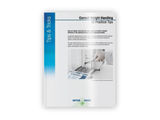To use all functions of this page, please activate cookies in your browser.
my.bionity.com
With an accout for my.bionity.com you can always see everything at a glance – and you can configure your own website and individual newsletter.
- My watch list
- My saved searches
- My saved topics
- My newsletter
Pseudohermaphroditism
Pseudohermaphroditism or pseudo-hermaphroditism, is a name used to describe people born with secondary sex characteristics[1] or a phenotype[2] which is different than would be expected based upon the gonadal tissue (ovary or testis). In some cases, the external sex organs look intermediate between the typical vagina or penis. In other cases, the external sex organs have an appearance that does not look intermediate, but rather has the appearance that would be expected to be seen with the "opposite" gonadal tissue. Because of this, pseudohermaphroditism is sometimes not identified until puberty. The term "male pseudohermaphrodite" is used when a testis is present, and the term "female pseudohermaphrodite" is used when an ovary is present.[3] The term "true" hermaphrodite is reserved for the very rare cases where both ovarian and testicular tissue is present. (Whether or not that term would be appropriate when ovotestis are found, or only when distinct ovaries and testes are found, is not well defined.) It is possible for the condition to be undetected until adulthood.[4] Associated conditions in males include 5-alpha-reductase deficiency, and associated conditions in females include Turner's syndrome and Klinefelter's syndrome.[5] Additional recommended knowledge
SurgerySurgery has sometimes been performed to alter the appearance of the genitals.[6][7] Modern approaches often involve delaying surgery when possible until the child matures enough to express a preference. TerminologyUse of the term "pseudohermaphroditism" can be problematic. The term "pseudohermaphroditism" was created by Edwin Klebs in 1876, [8][9] long before the genetic roles of the X chromosome and Y chromosome and the social components of gender identity were well characterized, which is why the term is usually used to describe the dissonance between gonadal histology and external genital appearance. In modern usage, the term "pseudohermaphroditism" is usually restricted to the technical literature, having been replaced by "intersex" in most public discussion.[citation needed] The term "intersexuality" was introduced by Richard Goldschmidt in 1923. [8][10] However, the term "intersex" has also been challenged, with some preferring the term "disorders of sex development" ("DSD") in some contexts.[11] One example of the challenges involved in the use of the term is the case of women with Complete Androgen Insensitivity Syndrome (CAIS). These women typically have primary and secondary sexual characteristics typical of other women; however, they are genetically XY and have internal testes, rather than ovaries. They often marry but cannot have children. However scientifically precise the description "male" pseudohermaphrodite may be for such women, it is clearly socially inappropriate. CAIS is little better. Most intersex conditions are normal (if rare) human physicalities.[citation needed] The S for syndrome in CAIS does not accord with the "normality" CAIS women feel about their bodies. HistoryJohn Money is perhaps the best known early researcher in this area. His doctoral thesis was titled Hermaphroditism: An Inquiry into the Nature of a Human Paradox, and awarded by Harvard University in 1952.[12] Money was forced to change his mind about several of his early views in the course of his career (see main entry David Reimer). Milton Diamond has probably become the best known expert public advocate for the intersex community in the early 21st century. He is the director of the Pacific Center for Sex and Society.[13] See alsoReferences
Categories: Biology of gender | Sexual anatomy |
|||||||||||||||||
| This article is licensed under the GNU Free Documentation License. It uses material from the Wikipedia article "Pseudohermaphroditism". A list of authors is available in Wikipedia. | |||||||||||||||||







